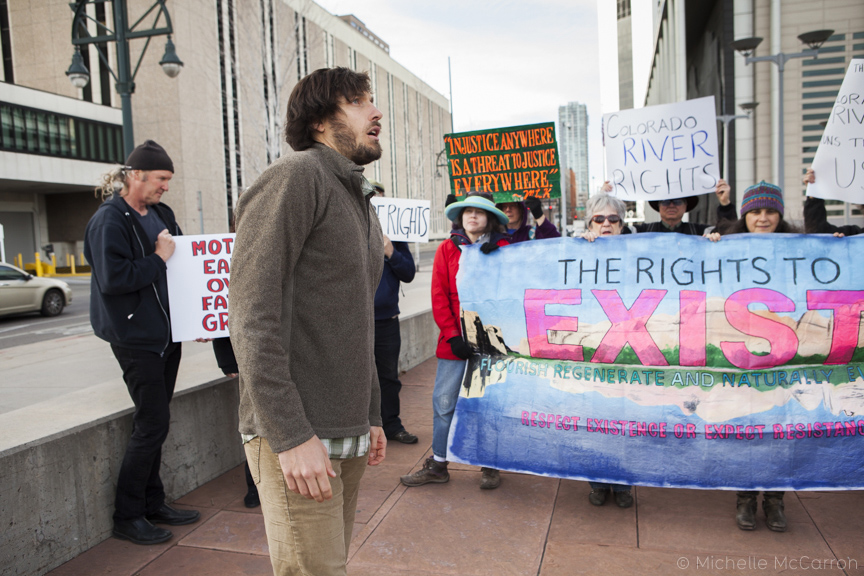
by Deep Green Resistance News Service | Nov 17, 2017 | Listening to the Land
Featured image by Michelle McCarron
Editor’s note: This is the latest installment from Will Falk as he follows the Colorado River from headwaters to delta, before heading to court to argue for the Colorado River to be recognized as having inherent rights. More details on the lawsuit are here. The index of dispatches is here.
by Will Falk / Deep Green Resistance Southwest Coalition
Tuesday, I stood on the steps of the Alfred A. Arraj Federal Courthouse in Denver before a crowd gathered to hear my thoughts as one of the “next friends” in our lawsuit seeking personhood for the Colorado River. We were supposed to have a hearing, but the court postponed it at the last minute. With so many of us traveling to Denver from across the Colorado River Basin, we decided to proceed with the press conference anyway.
It wasn’t the anxiety public speaking can induce that produced the tremor in my hand, the acid in my gut, or the quiver in my voice. It was a simple question, unresolved: Is it dishonest to speak of hope when you feel none?
Tuesday also marked the beginning of my fourth week traveling with the Colorado River. For going on four weeks now, I’ve pestered her with two questions. Who are you? And, what do you need?
I began my speech explaining that I arrived there after three weeks with the river. I recounted the violence I witnessed in La Poudre Pass where the Grand Ditch lies in wait to steal the Colorado River’s water moments after the union of snowpack, sunshine, and gravity gives her birth. I reported the energy expended pumping the river’s water uphill from Lake Granby reservoir to Shadow Mountain reservoir and then into Grand Lake before the Alva B. Adams tunnel drags the water 13 miles across the Continental Divide and beneath Rocky Mountain National Park to meet Front Range demands. I described the view from Palisade, CO where peaches are grown in the middle of the desert and criss-crossing canals, seen from the mountains, appear as vast, mechanical tattoos sewn into the flesh of the land.
I paused at this point, knowing that, after presenting my audience with a series of distressing images, I was supposed to leave them with a positive message. While I reflected on what I had seen and said, however, I felt the river’s truth spill over me. For three weeks, I thought I had been listening to the Colorado River. But, she isn’t a river anymore. Not truly. She has been so diverted and dammed, experienced so much extraction and exploitation, that the best way to describe her is not as a river, but as an industrial project, as a series of tunnels, concrete channels, and canals, as another tortured corpse stretched across civilization’s rack.
While this realization washed over me, I considered our lawsuit and the rights of nature. I wondered if it is possible to grant rights to a ghost. I questioned whether the Colorado River could ever recover from what’s been done to her.
Grief threatened to overwhelm me, to silence me in despair. If I had been by myself, caught in the flow of these emotions in private, I would have wept. But, the presence of the crowd steadied me and as the despair trickled away, rage rushed in to take its place. That rage burned with the heat of the desert sun from the Colorado’s face and I learned that ghost or not, she who haunts is not dead.
To repost this or other DGR original writings, please contact newsservice@deepgreenresistance.org
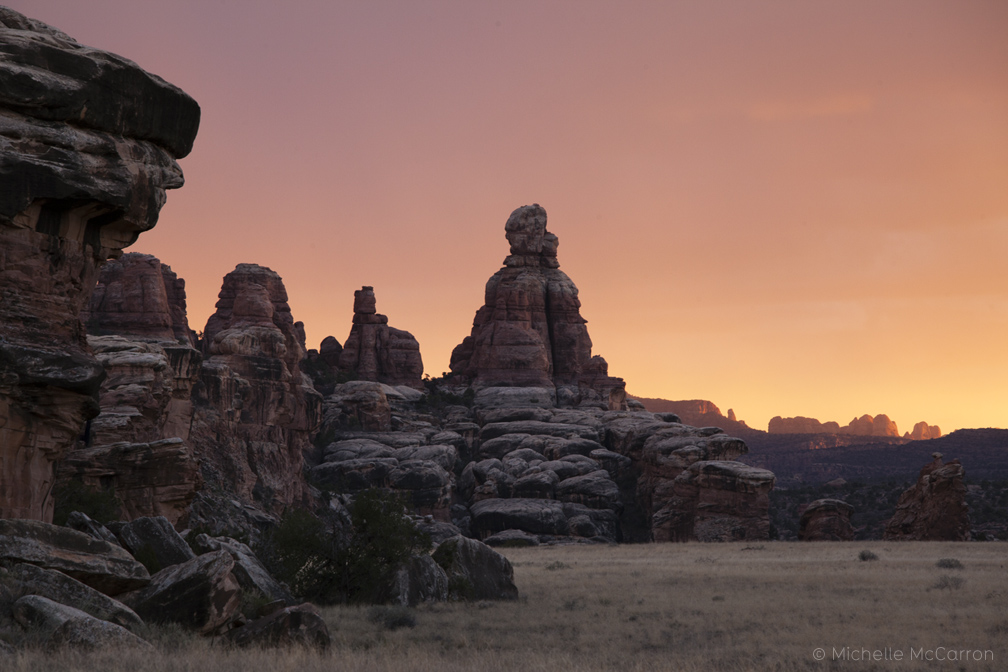
by Deep Green Resistance News Service | Nov 9, 2017 | Listening to the Land
Featured image by Michelle McCarron
Editor’s note: This is the latest installment from Will Falk as he follows the Colorado River from headwaters to delta, before heading to court to argue for the Colorado River to be recognized as having inherent rights. More details on the lawsuit are here. The index of dispatches is here.
by Will Falk / Deep Green Resistance Southwest Coalition
In most places, Life protects the modern human’s fragile sense of self-importance by veiling the weight of time in the soft accumulation of soil, by disguising the vastness of the universe in the reassuring consistency of an undisturbed horizon, and by salving existential angst with a diversity of nonhuman companions. There are places, however, where Life refuses to disguise herself and human self-importance disintegrates.
The red rock deserts and canyon lands of southeastern Utah, where we followed the Colorado River, are some of these places. The reality of time, frozen and piled where the land was rent into mesas and plateaus, crashes down on human consciousness while human bones shiver in the shadows and foreshadows whispered by stones, boulders and the bones of the land.
She beckoned us south through these lands. She fled through the sheer red rock walls that she sculpted as monuments to her power. She paused, at times, in warm pools, to let the colors of stone reflect from her face and to rejoice in her own beauty. To interpret her work as vanity is to misunderstand; only her creations are worthy of her celebration. The waters flowing through our bodies coursed against our skin and tugged on our veins yearning to mingle with their kin. We ached with regret for the moment life would necessarily drag us from her banks.
Mesmerized and seeking the Confluence of the Green and Colorado Rivers, we got lost in Canyonlands National Park. We never got the photograph of the Confluence we sought. At first, we were angry at ourselves. We ended up hiking close to fourteen miles in seven hours, up canyon walls abruptly rising six or seven hundred feet, through a rainstorm, and across canyon floors covered in several inches of loose sand which required muscles we forgot we had. We thought that we did it all for nothing. Worst of all, feeling a responsibility to tell the Colorado River’s story, we thought that we let the river down.
But, the deeper I think about it, the clearer an image of the river, waving through the orange sunshine of a desert dusk, becomes. She seems to smile with the compassionate gleam of elder wisdom. “You should have known,” she says. And, now I do: We did not simply miss the cairns, lose the trail, and end up five miles south of the Confluence and six miles from our cars, after sunset. No, we lost more than the trail. We lost our self-importance. And, only humility remained.
To repost this or other DGR original writings, please contact newsservice@deepgreenresistance.org
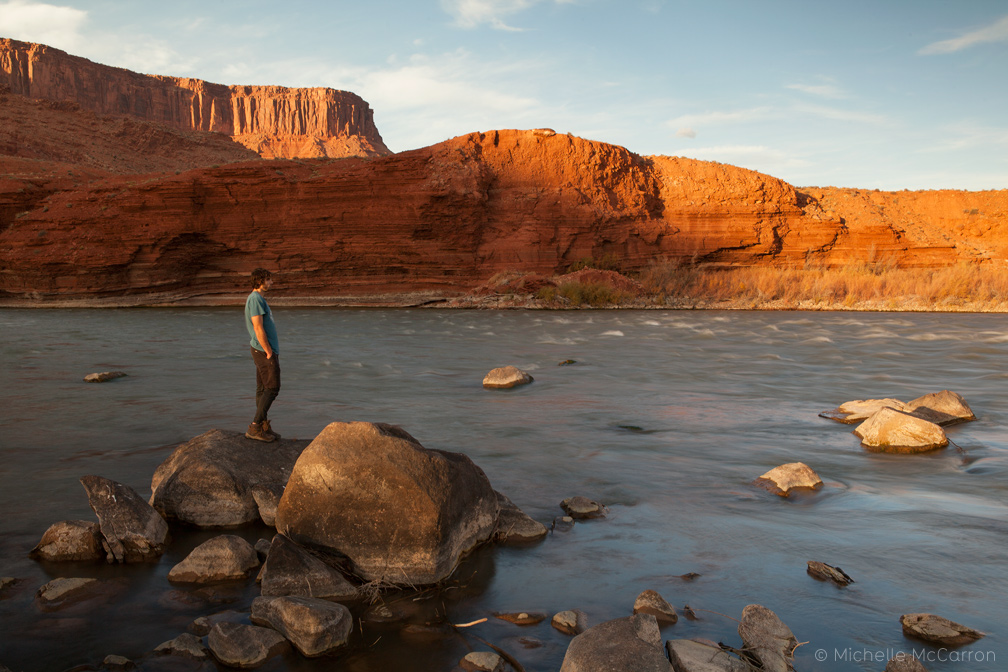
by Deep Green Resistance News Service | Nov 5, 2017 | Listening to the Land
Featured image by Michelle McCarron
Editor’s note: This is the latest installment from Will Falk as he follows the Colorado River from headwaters to delta, before heading to court to argue for the Colorado River to be recognized as having inherent rights. More details on the lawsuit are here. The index of dispatches is here.
by Will Falk / Deep Green Resistance Southwest Coalition
Hear the white crash of her torrents on the boulders she drags through the desert, feel the unyielding red rock she pushes through, lose your balance in the impatience of her swift streams, and you’ll know: The Colorado River needs to provide her waters and yearns for her home in the sea.
I spent several hours in silence with the Colorado River last night listening to her speak of her desires while I pondered our lawsuit that seeks rights for the river. I saw the silver sparks of minnows playing under brown stones. I watched the wind shower gray pools with gold cottonwood leaves. I was washed away in the vertigo caused by the river’s speed conflicting with the primordial stillness of canyon walls. I did not hear a judge’s gavel, evidentiary proceedings, or opposing counsel’s objections. In fact, I neither saw nor heard anything human, save my hands cupped to gather water and the soft beat of blood over my eardrums.
I wondered if the arguments tossed around the small confines of a courtroom or the abstract rights possessing little meaning beyond that granted them by the human mind could give the river what she needs. The river’s needs are physical, concrete, and real. She needs dams to be removed, she needs annual snowfall to return to pre-industrial levels, and she needs poisonous chemicals to be filtered out of her. The question becomes: Can our lawsuit give the river what she needs?
Our lawsuit asks a judge to rule that the Colorado River is a person capable of possessing the rights to exist, flourish, regenerate, and naturally evolve. Personhood gives the person possessing a right the ability to ask a court to enforce the right. A court enforces a right by commanding someone to stop an activity infringing upon a person’s right or by commanding someone to pay the person whose rights were infringed upon. A court ensures a command is followed by calling upon the police (men and women with guns) to compel compliance with a court order.
It is important to understand that filing a lawsuit is nothing more than an attempt to persuade a judge to use force, or the threat of force, to compel someone to act in a certain way. Our Colorado River lawsuit is an attempt to persuade a federal judge to order the State of Colorado to stop activities and projects that violate the river’s rights to exist, flourish, regenerate, and naturally evolve.
If our lawsuit succeeded, and the State of Colorado’s destructive activities were stopped, then, yes, the lawsuit would help to give the Colorado River what she needs. But, the closer our first hearing on November 14 gets, the more anxious I become. My anxiety is rooted in the fact that we do not have control over what happens in the case. Not truly. The lawsuit leaves it up to a judge who spends most of her time behind the walls and under the roof of a courthouse, who most likely lacks the time to sit humbly at the river’s banks to ask her what she needs.
This anxiety is nothing new. It is an anxiety that has become all too familiar to the environmental movement. We continue to lose, the natural world continues to be murdered, because the vast majority of our efforts are spent trying to convince someone else to do the right thing. We can continue to ask someone else to protect those we love, or we can protect them ourselves. More than anything else, the Colorado River needs dams to fall and her waters replenished. The good news is: a court order isn’t the only way a dam falls.
To repost this or other DGR original writings, please contact newsservice@deepgreenresistance.org
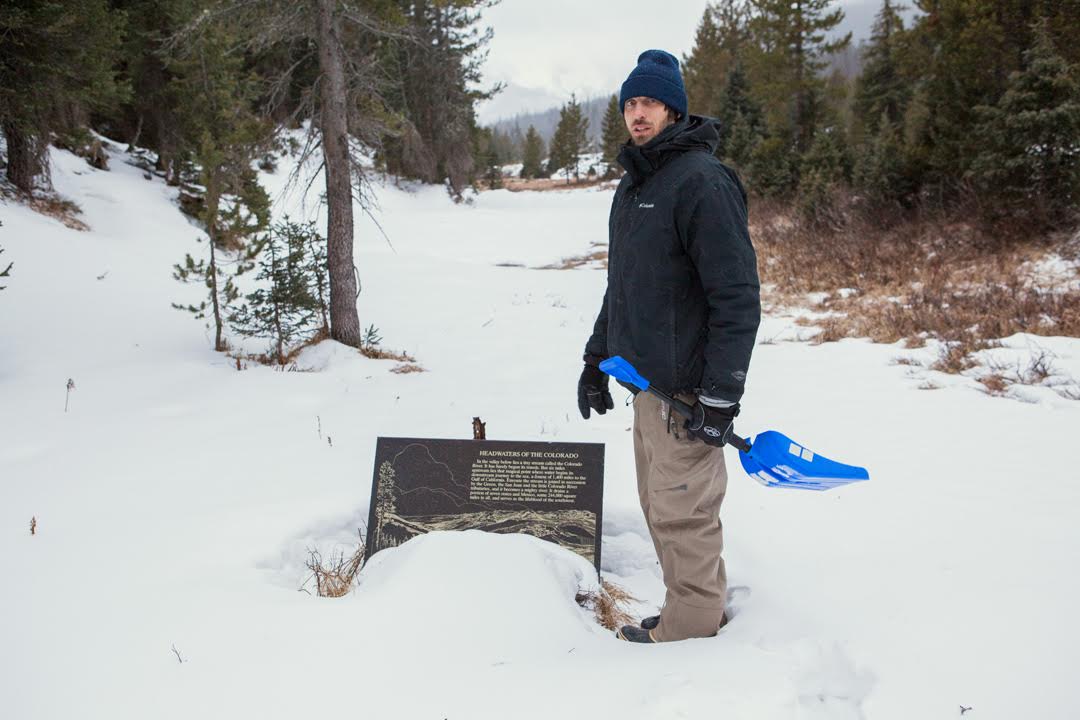
by DGR News Service | Oct 29, 2017 | Listening to the Land
Featured image by Michelle McCarron
Editor’s note: This is the latest installment from Will Falk as he follows the Colorado River from headwaters to delta, before heading to court to argue for the Colorado River to be recognized as having inherent rights. More details on the lawsuit are here. The index of dispatches is here.
by Will Falk / Deep Green Resistance Southwest Coalition
To truly understand someone, you must begin at her birth. So, Michelle and I spent the last two days looking for the Colorado River’s headwaters in the cold and snow above La Poudre Pass on the north edge of Rocky Mountain National Park. The pass is accessible by Long Draw Road off of Colorado Highway 14. Long Draw Road is an unpaved, winding, pot-holed trek that takes you fourteen miles through pine and fir forests and past the frigid Long Draw Reservoir before ending abruptly in a willow’d flat.
We found the road covered in an inch of frosty mud which required slow speeds to avoid sliding into roadside ditches. The drive served as a preparatory period in our journey to the Colorado River’s beginnings. The road’s ruggedness and incessant bumps combined with sub-freezing temperatures to ask us if we were serious about seeing the Colorado River’s headwaters. I was worried that Michelle’s ’91 Toyota Previa might struggle up the pass, but the van continued to live up to the Previa model’s cult status.
Long Draw Road foreshadowed the violence we found at the river’s headwaters. Swathes of clearcut forests escorted the road to the pass. The Forest Service must be too lazy to remove single trees from the road as they fall because Forest Service employees had simply chainsawed every tree within fifty-yards to the left and right of the road. About 3 miles from the road’s end, we ran into a long, low dam trapping mountain run-off into Long Draw Reservoir. We expected to find wilderness in La Poudre Pass, so the dam felt like running into a wall in the dark.
The clearcuts, dam, and reservoir are grievous wounds, but none of them are as bad as the Grand Ditch. We walked a quarter-mile from the end of Long Draw Road where we found a sign marking the location of the river’s headwaters. On our way to the sign, we crossed over a 30-feet deep and 30-feet wide ditch pushing water west to east. We were on the west side of the Continental Divide where water naturally flows west. We contemplated what black magic engineers employed to achieve this feat. The ditch was as conspicuous in La Poudre Pass as a scarred-over gouge on a human face.
The Grand Ditch was begun in the late 1880s and dug by mostly Japanese crews armed with hand tools and black powder. It was built to carry water, diverted from the Colorado River’s headwaters, east to growing cities on Colorado’s Front Range. Close to two feet of swift water ran through the ditch. We learned that even before melting snowpack forms the tiny mountain streams identifiable as the Colorado River’s origins, water is stolen from her. Pausing in a half-foot of powder, I wondered whether the water stored here would end up on a Fort Collins golf course or stirred by the fins of a Vaquita porpoise in the Gulf of California.
Study the Colorado River’s birth and you’ll learn she is born from a wild womb formed by heavy winter clouds, tall mountain peaks, and snowpack. But, she emerges from this womb immediately into exploitation. In La Poudre Pass, the young Colorado River tastes the violence that will follow her the rest of her life.
To repost this or other DGR original writings, please contact newsservice@deepgreenresistance.org
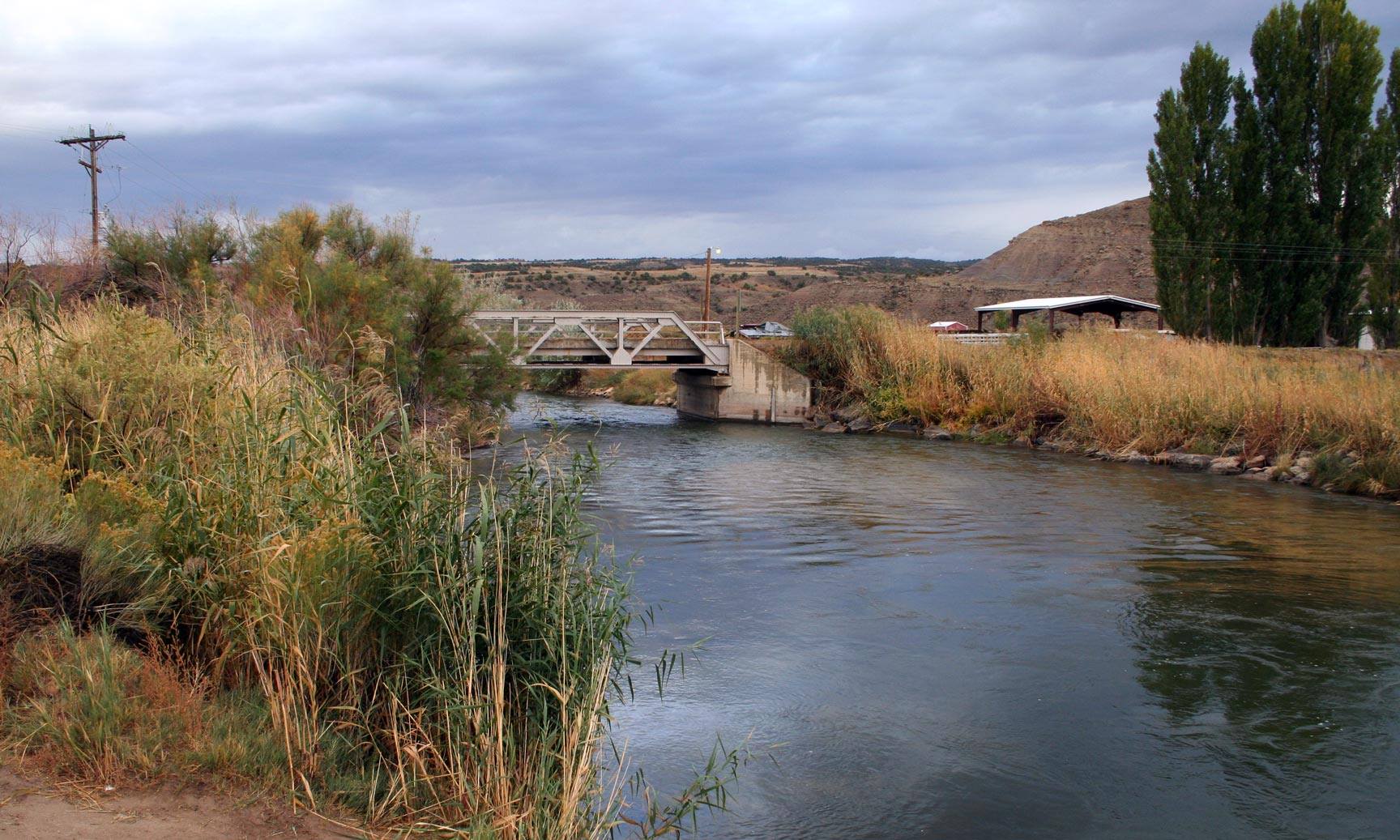
by DGR News Service | Oct 25, 2017 | Listening to the Land
Featured image by Michelle McCarron
Editor’s note: This is the latest installment from Will Falk as he follows the Colorado River from headwaters to delta, before heading to court to argue for the Colorado River to be recognized as having inherent rights. More details on the lawsuit are here. The index of dispatches is here.
by Will Falk / Deep Green Resistance Southwest Coalition
When I agreed to serve as a “next friend” to the Colorado River in a first-ever federal lawsuit seeking personhood and rights of nature for the river, I agreed to represent the river’s interests in court. On a general level, it’s not difficult to conceptualize the Colorado River’s interests: pollution kills the river’s inhabitants, climate change threatens the snowpack that provides much of the river’s water, and dams prevent the river from flowing to the sea in the Gulf of California.
We seek personhood for the Colorado River, however, and this entails personal relationship with her. Water is one of Life’s first vernaculars and the Colorado River speaks an ancient dialect. Snowpack murmurs in the melting sun. Rare desert rain runs off willow branches to ring across lazy pools. Streams running over dappled stones sing treble while distant falls take the bass.
Personal relationship requires that you learn who the other is. Our first day in court is scheduled for Tuesday, November 14, at 10 AM [you’re invited to attend]. So, I will spend the next few weeks leading up to the court date traveling with the river, sleeping on her banks, and listening. I will ask the Colorado River who she is, and then, if she’ll tell me, I’ll ask her what she needs.
When I arrive at the United States District Court in Denver, I hope to bring the Colorado River’s answer.
(I’ll post notes from the road. And, I’m excited to be meeting up with the brilliant photographer Michelle McCarron soon.)





